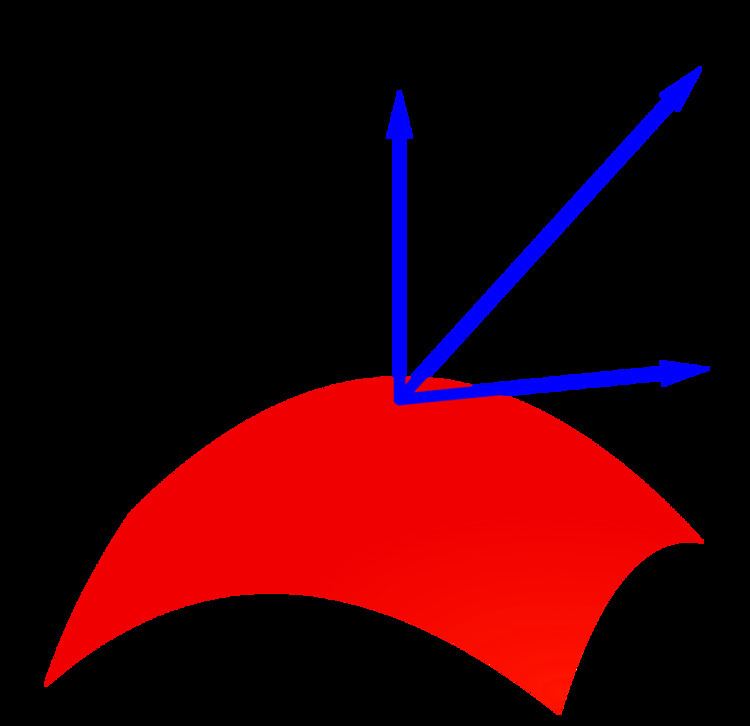 | ||
In mathematics, given a vector at a point on a curve, that vector can be decomposed uniquely as a sum of two vectors, one tangent to the curve, called the tangential component of the vector, and another one perpendicular to the curve, called the normal component of the vector. Similarly a vector at a point on a surface can be broken down the same way.
Contents
More generally, given a submanifold N of a manifold M, and a vector in the tangent space to M at a point of N, it can be decomposed into the component tangent to N and the component normal to N.
Surface
More formally, let
where the first vector in the sum is the tangential component and the second one is the normal component. It follows immediately that these two vectors are perpendicular to each other.
To calculate the tangential and normal components, consider a unit normal to the surface, that is, a unit vector
and thus
where "
where "
Note that these formulas do not depend on the particular unit normal
Submanifold
More generally, given a submanifold N of a manifold M and a point
The quotient space
If M is a Riemannian manifold, the above sequence splits, and the tangent space of M at p decomposes as a direct sum of the component tangent to N and the component normal to N:
Thus every tangent vector
Computations
Suppose N is given by non-degenerate equations.
If N is given explicitly, via parametric equations (such as a parametric curve), then the derivative gives a spanning set for the tangent bundle (it's a basis if and only if the parametrization is an immersion).
If N is given implicitly (as in the above description of a surface, or more generally as a hypersurface) as a level set or intersection of level surfaces for
In both cases, we can again compute using the dot product; the cross product is special to 3 dimensions though.
